The current of a transistor is usually exponential to its voltage.
The exponential behavior is the large signal behavior, it describes the behavior of a BJT when you, for example, make \$V_{BE}\$ 600 mV to 700 mV. Then \$I_C\$ will respond to that change with an exponential behavior.
Note that this "exponential behavior" by itself is also an approximation, it is very accurate but doesn't take all things into account. If you apply \$V_{BE}\$ = 10 V to an NPN transistor, the formula will tell you that an enormous amount of current will flow. In the real world, that poor transistor will be destroyed instantly. That's not in the exponential behavior model.
But why is that relationship approximate to linear in this model?
Because that's a choice. When we use the (exponentially behaving) BJT and want to use it to make a linear (not exponential!) behaving amplifier, we bias the BJT at a certain \$I_C\$. Then for small variations of \$V_{BE}\$ the response of \$I_C\$ is more or less linear.
That linearized behavior can be modeled with the Hybrid-Pi model, it is an approximation of how the BJT behaves when biased at a certain \$I_C\$. So the model is linear and would work perfectly well if you make apply an input signal of 1000 Volts! But that's unrealistic and not what the model is intended for. It is intended for small signals where the behavior is still somewhat linear. With a 100 mV signal at the base, you're already at the edge of the model.
Are there any books or any other resources to prove the hybrid-pi model from scratch?
The "proof" is that the model is accurate enough for Analog circuit designers to use every day, do hand calculations using the model and design their circuits with that. As mentioned in Neil_UK's answer, a model is always incorrect (never 100% accurate) but it can still be useful.
How such a model is created is usually (this is my educated guess, I made a models this way a long time ago): the device is measured so that all data is available. From that data a formula (or circuit using ideal elements) is build that approximates this behavior. Then we have a large signal model.
Then we can choose a (biasing) point for which we determine the derivative of the large signal model, that will then be a small signal model. If we only include linear behavior in that model, it is a linearized model like the Hybrid-Pi model.
